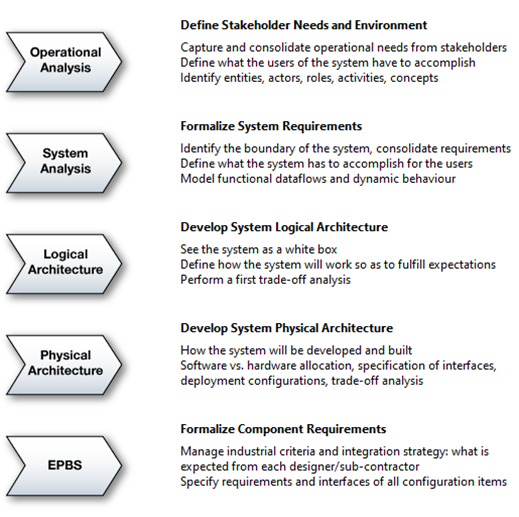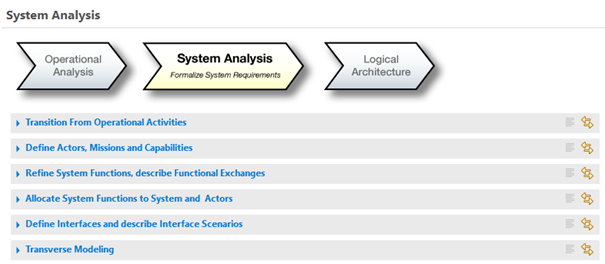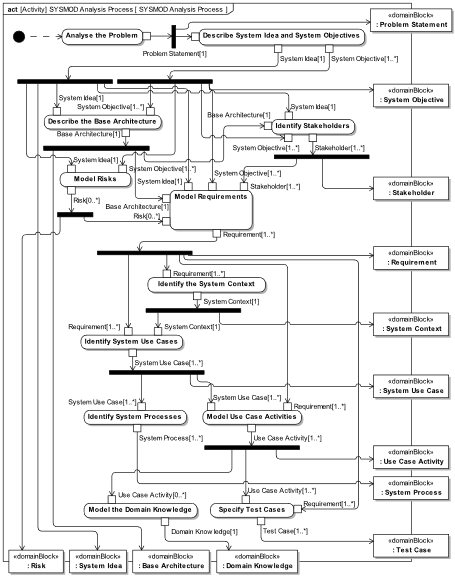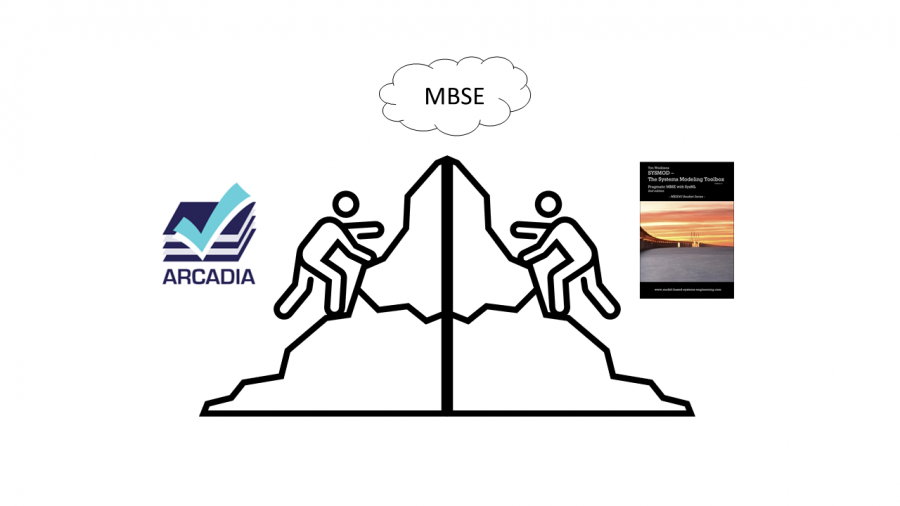Part I - Introduction and Concepts
In this blog-series "What the user needs - Comparing System Analysis with Arcadia or SYSMOD" we are going to dive into the world of the MBSE methodologies Arcadia and SYSMOD.
The purpose of this blog-series is to show similarities and differences between System Analysis in Arcadia and SYSMOD. There will not be any evaluation as the use of each methodology depends on the specific project requirements.
This series will be separated into three parts.
- Introduction and Concepts: A general introduction to the methodologies and the concepts they apply in System Analysis
- Process & Diagrams: Comparing the process steps and the used diagram types
- Summary & Conclusion: Overview and discussion about the findigs of parts 1 & 2
Todays Contents
- What is it?
- Level of abstraction
- Output
- Concepts
1. What is it?
Arcadia, short for Architecture Analysis and Design Integrated Approach, provides a modeling method and a SysML-oriented but simplified modeling language for MBSE. It is highly integrated with the modeling tool Capella.
On the other hand, SYSMOD, short for Systems Modelling Toolbox, is a collection of MBSE methods and best practices independent of any modeling language or tool. It is recommended to use SYSMOD with SysML.
As Arcadia integrates a modeling language and method, we use SYSMOD with SysML to have a better foundation for comparison.
2. Abstraction Level of the Analysis Processes
Arcadia and SYSMOD address the needs of abstraction and the separation between system needs and solutions in systems engineering differently.
They both provide distinct processes for needs (analysis) and solutions (architecture). The different architecture levels (functional, logical, physical, etc.) are not considered any further in this blog series. Therefore, the focus will be solely on the analysis part.
Arcadia, on the one hand, defines two processes to address two different abstraction levels. The Operational Analysis with focus on the users of the system, and the System Analysis with focus on what the system has to accomplish for the users.

Source: Capella Activity Browser
According to Capella the System Analysis is divided into the following steps:

Source: Capella Activity Browser
Each step and the used diagrams will be part of the next blog post.
SYSMOD, on the other hand, provides the SYSMOD Analysis Process to capture different levels of abstraction, like stakeholder and user needs or system requirements. But SYSMOD also states to use the analysis process in iterations and loops.

Source: SYSMOD System Analysis Process
Output
The central output of the System Analysis in Arcadia are the system functions and the expected behavior. It is important that early design solutions are excluded. The focus is exclusively on system needs.
The SYSMOD Analysis process as well contains descriptions of functional and non-functional specifications. But it does not exclude structural descriptions of the system. It is possible to define structural aspects of the system context or architecture and design that is pre-set at project start.
Mapping of Modelling Concepts
Modelling Languages and Methods use generic concepts to represent artifacts of the system that is under development. Arcadia (with an integrated modelling language and method) and SYSMOD using SysML use similar concepts to represent functional, structural, and other aspects of the system.
For the comparison of SYSMOD and SysML concepts to functional, structural and data and interface model concepts in Arcadias System Analysis process see here. It is not the goal to do a detailed mapping between the metamodel of the Arcadia Modeling Language and the SysML specification. The focus is on comparing the concepts of SYSMOD using SysML with the concepts of Arcadia. For a more detailed mapping see Badache & Roques (2018).
In the next part we will take a deeper look into the process steps and the diagrams that are used.
Also I want to say thank you to Tim and Bernd @oose for their support and time to make this blog-series happen!
[Update Info, 16.03.2021: Earlier I talked about the SysML metamodel. The SysML v1.6 that is the found of the comparison does not have a official metamodel, but a specification. A official SysML metamodel will be part of SysML v2]
Sources:
Badache & Roques (2018), CapellaSysMLBridge
Capella Tool, https://www.eclipse.org/capella/
Roques (2016), MBSE with the ARCADIA Method and the Capella Tool
OMG (2019), SysML Spezifikation
Voiron (2018), Model-based System and Architecture Engineering with the Arcadia Method
Weilkiens (2020), SYSMOD - The Systems Modeling Toolbox
